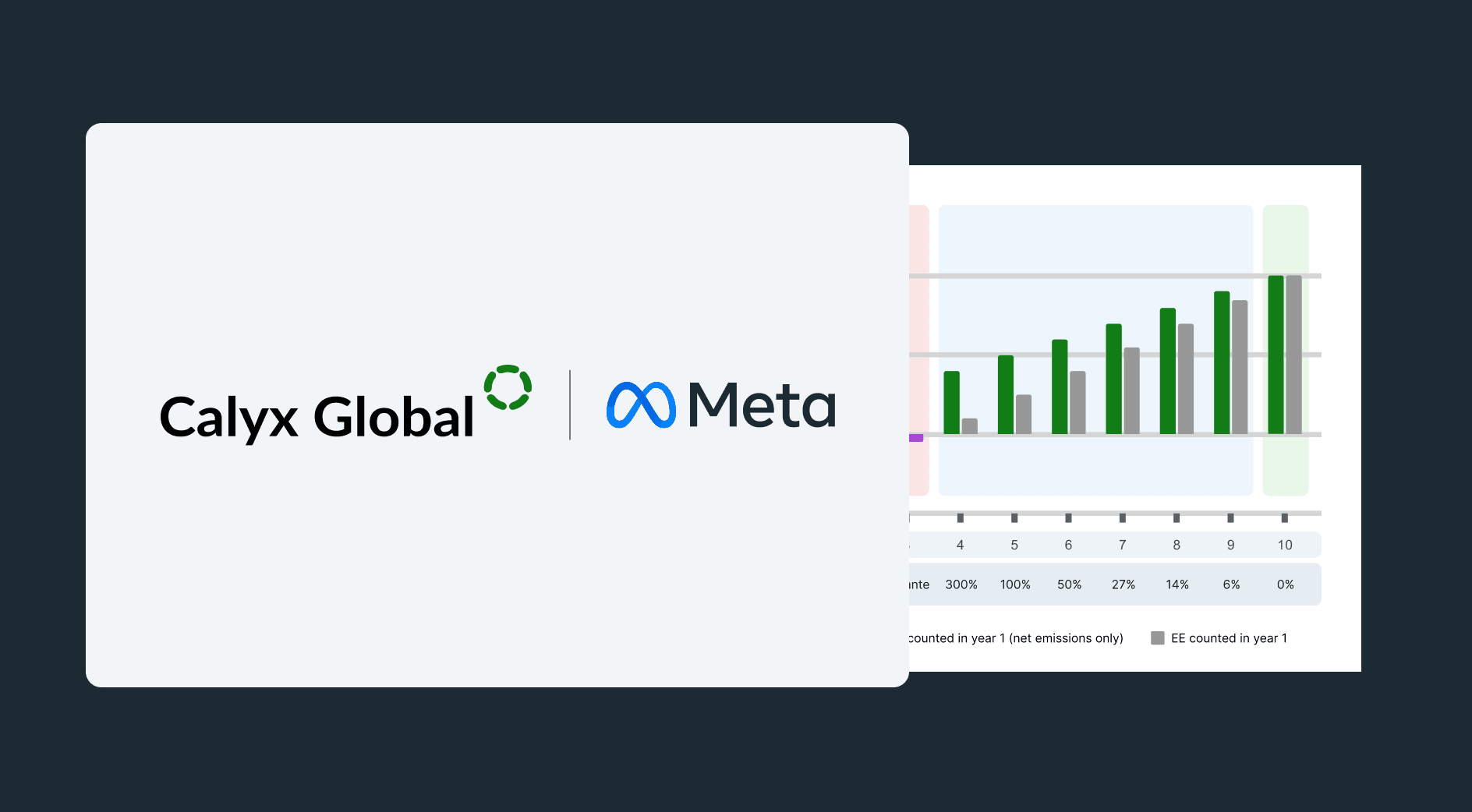
Building confidence in carbon markets through improved transparency
April 30, 2024 - Commentary
Carbon credit ratings support buyer confidence when purchasing carbon credits…
In the world of carbon projects, ensuring greenhouse gas integrity is crucial to creating high-value carbon credits for buyers and the planet. Increasingly, buyers are interested in carbon credit ratings, which provide them with an independent view of credit quality and give them extra comfort and confidence in their purchase and use of carbon credits.
…but not all credits, or aspects of credits, can be rated.
At Calyx Global, we try to be thoughtful about what we can and cannot rate. First and foremost, we rate claims attached to carbon credits—currently, we rate GHG mitigation and SDG contribution claims. While we support early-stage project risk assessments for clients using our ratings framework, we do not "rate" credits that haven't made a claim yet (which only happens at the time of verification and issuance).
We believe a carbon project must have undergone a third-party audit and provide a minimum level of information to be rated. For example, we do not provide ratings of sustainable development impact for credits that are not certified with CCB, SDVista or GS4GG, and have not had a third-party audit. We do not believe that rating agencies can or should replace validation and verification bodies (VVBs). We see their role as critical in carbon markets and complimentary to our own. As such, we will not rate a project’s “self-reported” claims to have contributed to the United Nations Sustainable Development Goals (SDGs) without a proper process confirming that reported contributions are aligned with the rules and procedures of the program and standard under which the contributions are claimed.
We also need a minimum level of information to provide a rating. For example, we recently started providing systematic, in-depth assessments of environmental and social risk in the form of “ESR screenings.” At this time, we do not rate ESR risk because we feel that carbon crediting programs first need to strengthen this area. This includes requiring more comprehensive safeguards reporting requirements, providing clearer guidance for projects and promoting the standardization of information.
To rate a project's GHG integrity, we require clear information on the activities the project is implementing (found in the Project Document, PD, or sometimes called a Project Design Document, PDD) and sufficient information to assess how well emission reductions (or removals) were estimated. The latter should be included in Monitoring Reports. There are cases where we have not found sufficient information to generate a rating – for example, a missing PD/PDD, or fundamental information such as a shape file for a forestry project, or the life-cycle analysis for a biochar project, is missing in the registry. In such cases, we were unable to provide a rating for the project.
Missing information can impact ratings
We believe all carbon projects should provide sufficient information to justify an emission reduction (or removal) claim. This information is fundamental to underpinning confidence in carbon markets. Our ratings assume the “burden of proof” is on the carbon crediting program and project developer to provide this information. The carbon crediting program should require and make available, within a public registry, detailed and transparent information about the project and its mitigation claim, while the project developer is responsible for disclosing all relevant data related to the project and ensuring it is visible in the public registry.
The quality of any assessment of carbon integrity heavily relies on the quality of available data. At Calyx Global, we use publicly available information for our ratings. We believe that public information can build trust because when information is in the public domain, it allows for scrutiny by stakeholders and creates accountability for the veracity of such information.
We recognize that some information is challenging to put in the public domain. For example, a project developer may not want to share detailed capital expenditure, costs and benefits used in a financial viability study if this information is associated with the organization’s competitive advantage. In such instances, it is best practice for that information to be provided to the third-party auditors (VVBs) and assurances provided by the auditor – for example, that carbon credit revenue was critical for the activity -- in the verification report.
Below, we offer a few examples of what we believe should be available but are sometimes missing—and this can impact a rating. The list below is illustrative, not exhaustive.
- Proving additionality: We often find evidence lacking that demonstrates carbon revenue was incorporated into the decision to implement the mitigation activity, i.e. that showcases consideration of carbon income before the investment decision was made (often called “prior consideration”). Furthermore, we look for a demonstration of how carbon revenues were “make or break” for the project activity – for example, a clear description of how the feasibility of the project activity was conducted and information used in the financial assessment could be made available. Alternatively, a VVB can confirm the project needs carbon finance if such information is commercially sensitive.
- Robust quantification: The baseline is particularly important in this regard as it provides a reference point for comparing the project's emissions against a business-as-usual scenario, helping to quantify the project's impact. Information applied in setting the baseline for a project should be substantiated in the project documentation and/or the monitoring reports, making an effort to provide clear explanations regarding the adoption of, e.g., default factors or calculation approaches. Ideally there is a calculation spreadsheet that clearly demonstrates how emission reductions were estimated. Furthermore, there should be a full discussion on the uncertainty of various parameters that go into the emission reduction (or removal) calculation. Often, we find that key uncertainties are not accounted for or documented in the estimation.
- SDGs: Access to project documents is essential for our SDG Impact ratings. The lack of key documents, for example a monitoring report, is detrimental to the project as it does not take into account all the environmental and social benefits the project contributes to local communities.
Conclusion: Transparency and trust in carbon markets
The ICVCM sets a high bar for transparency. It states that documentation should be publicly available including “all necessary information… to enable third parties to assess the social and environmental impacts of the mitigation activity and to replicate the GHG emission reduction or removal calculations and assessment of additionality.”
We have evaluated more than 500 projects across seven carbon crediting programs, spending significant time digging into registry documentation. No program currently lives up to the ICVCM requirements. In particular, programs can improve their transparency requirements and performance regarding the social and environmental impacts of carbon projects.
Based on our experience, we also agree with the recommendations in the recent study conducted by Carbon Market Watch (on page 4). These include improving the completeness of information, stronger quality assurance and controls, instituting naming conventions to make the registries easier to navigate and stronger communications channels.
While it is evident there is a need for improvement in this regard, we also see efforts being made by some registries to address these challenges. And we believe that some of the emerging dMRV initiatives will also be helpful in this regard.
Providing access to comprehensive and accurate public information is critical to building trust and confidence in carbon markets. Unless stakeholders can understand and be confident in the quality of credits, the market cannot scale.
Keep up with carbon market trends
Get the monthly newsletter and stay in the loop.
Trusted By



About the author
Calyx Global Research Team


